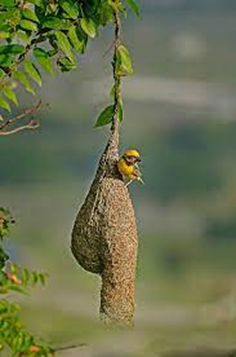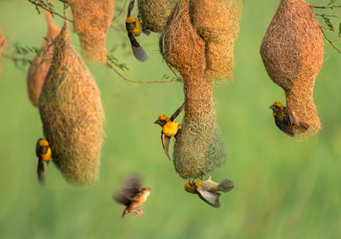Physical Address
23,24,25 & 26, 2nd Floor, Software Technology Park India, Opp: Garware Stadium,MIDC, Chikalthana, Aurangabad, Maharashtra – 431001 India
Physical Address
23,24,25 & 26, 2nd Floor, Software Technology Park India, Opp: Garware Stadium,MIDC, Chikalthana, Aurangabad, Maharashtra – 431001 India

More specifically, weather is the mix of events that happen each day in our atmosphere. Even though there’s only one atmosphere on Earth, the weather isn’t the same all around the world. Weather is different in different parts of the world and changes over minutes, hours, days, and weeks.
Whereas weather refers to short-term changes in the atmosphere, climate describes what the weather is like over a long period of time in a specific area. Different regions can have different climates.
When scientists talk about climate, they’re often looking at averages of precipitation, temperature, humidity, sunshine, wind, and other measures of weather that occur over a long period in a particular place. More can be read from here Archived.
Traditional practices to predicting weather
Farmers throughout history used to foretell the future climate and weather events. These include, appearance of some animals, sounds of some specific animals, presence of some conditions like heat or cold, and flowering of trees. Such observations and experience have been accumulated as local knowledge which is transferred from generation to generation (read the article from here Archived.)
Do Sri Lankan farmers still use traditional methods to predict weather?
A survey carried out by IPS in six districts in Sri Lanka (Anuradhapura, Batticaloa, Hambantota, Kurunegala, Badulla and Ratnapura) interviewed 900 farmers, using a semi-structured questionnaire. Nearly 57% of the farmers said they use traditional weather forecasting methods or their traditional knowledge in making crop cultivation decisions, while 43% of them stated that they do not use traditional methods. Furthermore, 60% of the farmers who are using traditional methods claimed that their predictions are consistent with the formal weather report predictions.
Sources of traditional weather forecast
Traditional people concluded their predictions in folklores, folk poetry, folk arts and palm-leaf manuscripts (Puskola poth). Below is one such folk poem.
Around 60% of farmers perceived that traditional weather forecasts are moderately consistent with formal weather predictions relating to parameters concerning the onset of rainfall, intensity of rainfall, duration of rains, wind speed, wind direction, day temperature, humidity level, etc. More can be read from here
ඉර හද මඩල දැක ගන් බිජු වට අතුරා
මොර මල් පිපෙයි වැහි පල දැනගන්න සිකුරා
දෙපෙති වේවිද නියඟ ඉඳුරා
මල් ඵල දේද වැසි පල සරුවෙයි ඉඳුරා
Source: Sobadaham Govithana(2)
Thilak Kandegama
When considering the meaning of this folk poetry, the first line of the poem says, if frost clouds are visible around the moon, it will rain soon and the second line is about Dimocarpus longan (Mora). If these flowers bloom more it will rain soon and if there is a smaller number of petals in flower or less flowers in the tree it is said to be a sign of drought.
Considering the climate of Sri Lanka, there were two seasons that brought rain to the island. The South-West monsoon brings rain from May to September and according to that farmers created the “Maha Kanna” (first season) concept to grow long term crops because it rains for a long period. As well, the North-East monsoon brings rain during December to February which is a short period and farmers create “Yala kanna” (second season) concept for that. It grows short term crops. A folk poem about “Maha kanna” (first season) cultivation is as follows
වෙසක් පොසොන් මස බිම් තෝරා ගන්ඩ
ඇසළ නිකිණි මස බිම් පීරා ගන්ඩ
බිනර මහේ වැටකොටු සවි කර ගන්ඩ
වප් මස පුරා වපුරන් අටු පුරවන්ඩ
Source: Sobadaham Govithana(2)
Thilak Kandegama
It says May and June is respectable for selecting a land for cultivation. It is the starting time of south west monsoon thus the second lines of folk poem says July and August is better for land preparation also, it is mid monsoon in which led farmers to easily prepare a land with the wet condition of soil. September note for buildup fences and support rods. October has been mentioned as the harvest month. As well it is the end of south west monsoon which confirms that farming was planned according to climate change.
Animal behaviors


It was also found that traditional people in north western province and southern province use some bird species to predict weather. The prophecy of Baya weaver, (Ploceus philippinus, Vadu kurulla) is amazing.
If the bird’s nest is in the upper part of the tree, it will rain heavily. If it is in the lower part, there is less rain. Also consider the belt hanging the nest on the tree. If it is tied very tightly, it will rain with strong winds.
Prof. Gamini Ranasinghe, Department of history and archeology, university of Sri Jayewardenepura stated that when building the bird’s nest, weavers have a good understanding of weather conditions for the next two to three months. He added that he had observed this incident for many years and it rarely goes wrong. People look at the materials used to make the nest (muddy soil, palm leaves, stuffing), knot type and the high above the ground are considered to predict climate.
In addition, if red-wattled lapwing (Vanellus indicus) lay their eggs near the “mada kaluva” which is the last part of the lake where the water sits that means less and less rain thus laying eggs far from the lake it rains heavily.
Hirundo hyperythra, (Ceylon Swallow, ‘vahi lihiniya’) flies parallel to the ground as a sign of rain. When this is considered scientifically, it can be concluded that these animals fly down to eat small insects such as beetles and ants that come out with the rain. Similarly behaving Brahm-in-kite (bamunu piyakussa) that fly down in the sky to eat lizards and small animals who came out of their burrows with rain.
If observed giant squirrel’s (dadu lena) nest built at the end of the branches, there will be less rain in the next two to three months, and if the nest is built in the middle of the branches, it will rain with strong wind and this is something that can take a correct clue about wind and rain says, prof. Gamini Ranasinghe.
Predictions through trees
The abundance of fruits, flowers and leaves of wood apple (divul tree) are signs of the occurrence of heavy wind and rainfall mentioned in an early book called ‘Upavana vinodaya’.
Furthermore, if wood apple tree has sufficient healthy fruits it means, there will be an enough rainfall however if there are many fruits and the fruits are small means less rainfall anyway low fruit production means less rain on the other hand If wood apples grow abnormally in higher amounts than usual, it signs a drought after one or two seasons says, Prof Gamini Ranasinghe. More information about this can be taken from the video below.
Areca catechu, (Betel nut, Puvak) is a very sensitive tree to moisture and grows well near water bodies consequently, if new roots are occurring on the tree, that is a sign of rain. Root occurring directions provide clues on which direction the rain comes from. Midella plant is also a water loving plant and grows nearby tunnels and lakes. If there are more young leaves it says it will rain within two weeks. More can be read from, ‘Kal yal bala govithan kirima’, Thilak Kandegama.
Weather prediction facts of Vaddah community, Sri Lanka.
Vaddah community predicted rain with the help of the moon and a statement confirming that is as follows,
“හඳ පොජ්ජ උඩු තැනට මංගච්චන හැටි මට විශ්වාස පොජ්ජ මන්ද කරගැනී, වෙසක් කාල මච්චේ කැලෑ පොජ්ජට මංගච්චල, රැකුම් පොජ්ජ බිම් පොජ්ජට පට ඇරලා, නිකිණි මාස පොජ්ජ පෝය දවස් පොජ්ජට පහමක් මෙයබින් දවස් පොජ්ජේ හේන් පොජ්ජට ගිනි පොජ්ජ මන්දෝ කේගෙන හතරමක් ඇට පොජ්ජ බිම් පොජ්ජට මන්ද කෝනවා”
More can be read from, ‘Kal yal bala govithana’, Thilak kandegama.
It means according to the position of the moon, they can talk about rainy days and they go to the forest in May, select and cut the trees and five days before the August full moon poya day they fire to the land and fire is automatically controlled with rain and after that they planting seeds. This confirms that they even knew the number of days when the rain would come with the rising of the moon.
Traditional knowledge cannot be completely discarded because studies shows that farmers still use traditional concepts to predict weather. Through this study some research was done about the scientific background of traditional weather predictions.
Comments are closed.
Superb article and very interesting.. We can collect many information via this article.